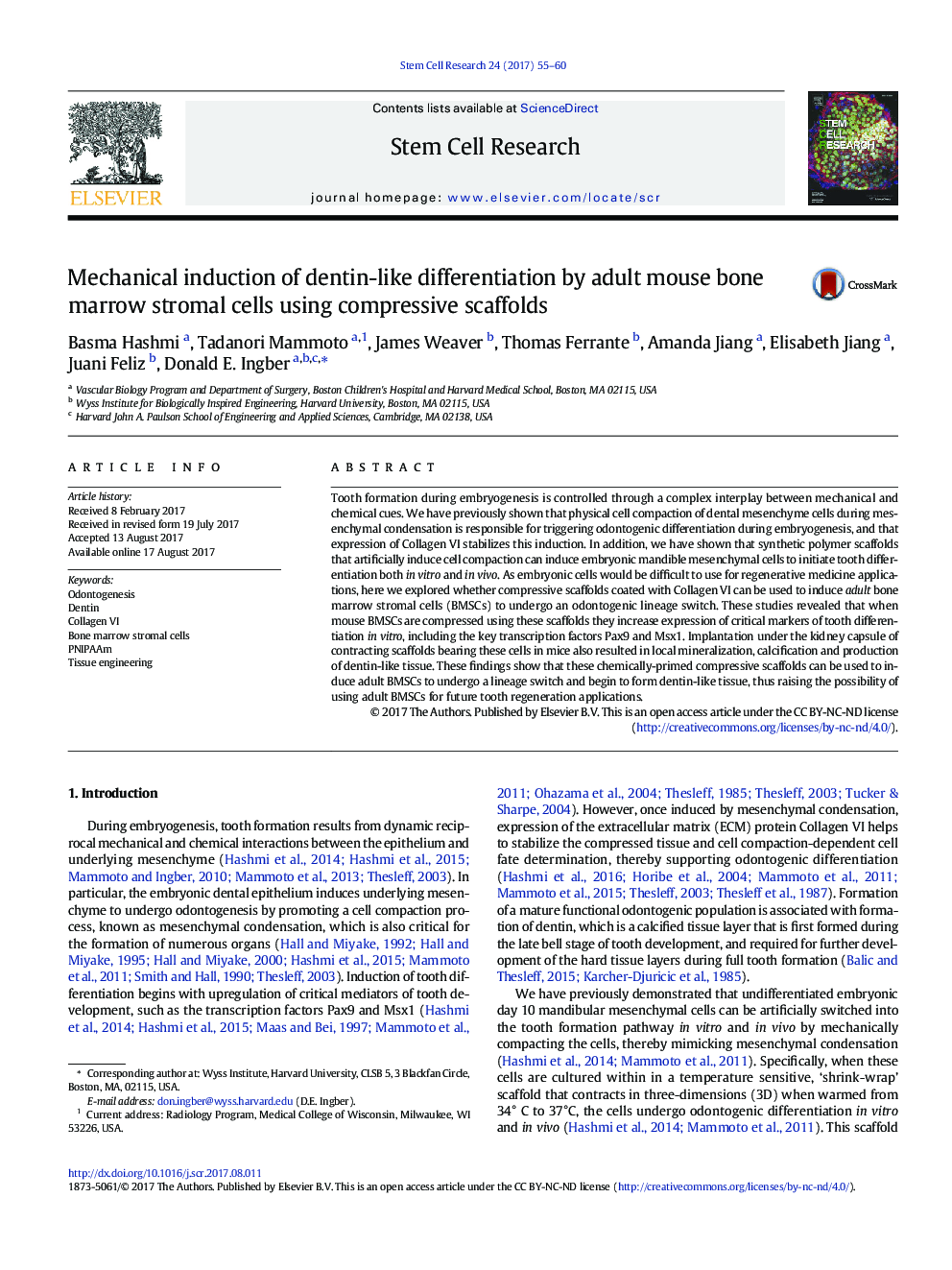| Article ID | Journal | Published Year | Pages | File Type |
|---|---|---|---|---|
| 5522685 | Stem Cell Research | 2017 | 6 Pages |
â¢Thermoresponsive polymer mechanically compresses BMSCs to become odontogenic.â¢Early tooth markers Pax9, Msx1 and Barx1 are expressed in compressed BMSCs in vitro.â¢Thermoresponsive scaffolds induce formation of dentin-like tissue in vivo.
Tooth formation during embryogenesis is controlled through a complex interplay between mechanical and chemical cues. We have previously shown that physical cell compaction of dental mesenchyme cells during mesenchymal condensation is responsible for triggering odontogenic differentiation during embryogenesis, and that expression of Collagen VI stabilizes this induction. In addition, we have shown that synthetic polymer scaffolds that artificially induce cell compaction can induce embryonic mandible mesenchymal cells to initiate tooth differentiation both in vitro and in vivo. As embryonic cells would be difficult to use for regenerative medicine applications, here we explored whether compressive scaffolds coated with Collagen VI can be used to induce adult bone marrow stromal cells (BMSCs) to undergo an odontogenic lineage switch. These studies revealed that when mouse BMSCs are compressed using these scaffolds they increase expression of critical markers of tooth differentiation in vitro, including the key transcription factors Pax9 and Msx1. Implantation under the kidney capsule of contracting scaffolds bearing these cells in mice also resulted in local mineralization, calcification and production of dentin-like tissue. These findings show that these chemically-primed compressive scaffolds can be used to induce adult BMSCs to undergo a lineage switch and begin to form dentin-like tissue, thus raising the possibility of using adult BMSCs for future tooth regeneration applications.
